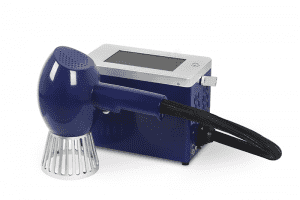Top Considerations for Laser Cutting Plywood
Top Considerations for Laser Cutting Plywood
A Guide of Wood Laser Engraving
Laser cut plywood offers unmatched precision and versatility, making it ideal for everything from crafts to large-scale projects. To achieve clean edges and avoid damage, it’s essential to understand the right settings, material preparation, and maintenance tips. This guide shares key considerations to help you get the best results when using a laser wood cutting machine on plywood.
Table of Contents
Choosing the Right Plywood
Material Preparation Tips
Common Issues & Troubleshooting
Recommended Wood Laser Cutting machine
Choosing the Right Plywood
Types of Plywood for Laser Cutting
Choosing the right plywood is essential for achieving clean and precise results with laser cut plywood projects. Different plywood types offer unique advantages, and selecting the right one ensures better performance and finish quality.

Laser Cut Plywood
Birch Plywood
Fine, even grain with minimal voids, excellent for detailed engraving and intricate designs.
Poplar Plywood
Lightweight, easy to cut, great for decorative panels and large designs.
Veneer-Faced Plywood
Decorative wood veneer surface for premium projects, offers a natural wood finish.
Specialty Thin Plywood
Ultra-thin sheets for model making, crafts, and projects requiring delicate cuts.
MDF-Core Plywood
Smooth cutting edges and consistent density, perfect for painted or laminated finishes.
Which Plywood Should I Choose Based on Laser Cutting Needs?
| Laser Cutting Use | Recommended Plywood Type | Notes |
|---|---|---|
| Fine Detailed Engraving | Birch | Smooth grain & minimal voids for crisp edges |
| Fast Cutting With Moderate Detail | Poplar | Lightweight and easy to cut for better efficiency |
| Large Area Cutting | MDF-Core | Consistent density for uniform cuts |
| High-Quality Edge Finish Required | Veneer-Faced | Decorative surface requires precise settings |
| Thin, Delicate Cuts | Specialty Thin | Ultra-thin for intricate models and crafts |

Baltic Birch Plywood
Plywood Thickness
The thickness of the plywood can also affect the quality of the wood laser cut. Thicker plywood requires higher laser power to cut through, which can cause the wood to burn or char. It is important to choose the right laser power and cutting speed for the thickness of the plywood.
Material Preparation Tips
Cutting Speed
The cutting speed is how quickly the laser moves across the plywood. Higher cutting speeds can increase productivity, but they can also decrease the quality of the cut. It is important to balance cutting speed with the desired cut quality.
Laser Power
The laser power determines how quickly the laser can cut through the plywood. Higher laser power can cut through thicker plywood more quickly than lower power, but it can also cause the wood to burn or char. It is important to choose the right laser power for the thickness of the plywood.

Laser Cutting Die Board Steps2

Laser Cutting Wood Die Board
Focus Lens
The focus lens determines the size of the laser beam and the depth of the cut. A smaller beam size allows for more precise cuts, while a larger beam size can cut through thicker materials. It is essential to choose the correct focus lens for the thickness of the plywood.
Air Assist
Air assist blows air onto the laser cutting plywood, which helps remove debris and prevents scorching or burning. It is especially important for cutting plywood because the wood can produce a lot of debris during cutting.

Air Assist
Cutting Direction
The direction in which the laser wood cutting machines the plywood can affect the quality of the cut. Cutting against the grain can cause the wood to splinter or tear, while cutting with the grain can produce a cleaner cut. It is important to consider the direction of the wood grain when designing the cut.

Laser Cutting Wood Die Doard 3
Video glance for Laser Wood Cutter

Portable Laser Marking Machine
Portable Laser Marking Machine
Flatbed Laser Cutter 130
Large Format Laser Cutter for Wood
| Working Area (W *L) | 80mm * 80mm (3.15” * 3.15”) |
| Laser Source | Fiber Laser |
| Laser Power | 20W |
| Working Area (W *L) | 1300mm * 900mm (51.2” * 35.4 ”) |
| Laser Source | CO2 Glass Laser Tube or CO2 RF Metal Laser Tube |
| Laser Power | 100W/150W/300W |
| Working Area (W *L) | 1300mm * 2500mm (51” * 98.4”) |
| Laser Source | CO2 Glass Laser Tube |
| Laser Power | 150W/300W/450W |


